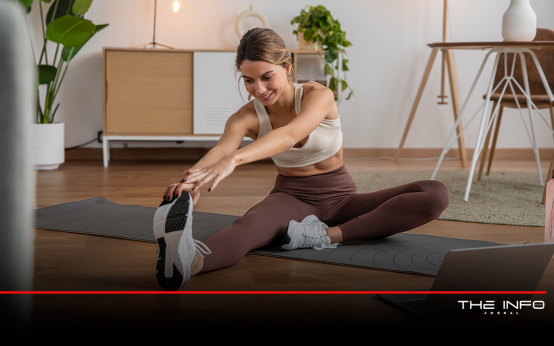Training in cold weather presents unique challenges and opportunities for athletes and fitness enthusiasts alike. With the right approach, you can leverage the cold to enhance your performance and achieve remarkable results. In this comprehensive guide, we’ll explore essential tips and strategies to optimize your training sessions in chilly conditions, ensuring you stay safe, motivated, and ultimately, achieve your fitness goals.
Embrace Proper Layering

Layering is key to staying warm and comfortable during cold weather training. Opt for moisture-wicking base layers to keep sweat away from your skin, followed by insulating layers to trap heat, and finally, a waterproof and windproof outer shell to shield you from the elements. This strategic layering system will regulate your body temperature effectively, preventing overheating or excessive cooling.
Warm-Up Adequately
Cold weather can make muscles tighter and more prone to injury. Prioritize a thorough warm-up routine to increase blood flow, improve flexibility, and prepare your body for the demands of your workout. Incorporate dynamic stretches, light cardio, and mobility exercises to prime your muscles and joints for optimal performance.
Hydrate Properly
Despite the cooler temperatures, hydration remains crucial during cold weather training. Cold air tends to be drier, leading to increased fluid loss through respiration. Stay hydrated by drinking water before, during, and after your workout sessions. Consider using a hydration pack or insulated water bottle to prevent liquids from freezing in frigid conditions.
Protect Extremities
Cold weather can be particularly harsh on exposed extremities such as hands, feet, and ears. Invest in high-quality gloves, socks, and headwear designed for cold weather activities to maintain warmth and circulation. Additionally, consider using hand and toe warmers to keep these sensitive areas comfortable and functional during training.
Adjust Your Pace
Cold weather can affect your body’s ability to perform at its peak, so it’s essential to adjust your pace and expectations accordingly. Understand that you may not achieve the same speed or intensity as in warmer conditions. Listen to your body and focus on maintaining a consistent effort level rather than fixating on pace or performance metrics.
Incorporate Interval Training
Interval training is an effective way to maximize your cold weather workouts while minimizing exposure to extreme conditions. Alternate between periods of high-intensity exercise and active recovery to challenge your cardiovascular system, build endurance, and boost calorie burn. This approach also helps to keep your body temperature elevated throughout the session.
Stay Visible and Safe
With shorter daylight hours and potentially inclement weather, visibility becomes crucial for safety during cold weather training. Wear reflective clothing or accessories and equip yourself with lights or reflective gear to enhance your visibility to motorists and other athletes. Choose well-lit routes and prioritize safety above all else.
Fuel Your Body
Cold weather training can increase your body’s energy demands as it works harder to maintain core temperature. Ensure you’re adequately fueled by consuming nutrient-dense meals and snacks before and after your workouts. Prioritize carbohydrates for energy, lean proteins for muscle repair, and healthy fats for sustained endurance.
Listen to Your Body
Pay close attention to how your body responds to cold weather training. If you experience symptoms of hypothermia or frostbite, such as excessive shivering, numbness, or disorientation, seek shelter and warmth immediately. Know your limits and don’t hesitate to modify or cut short your workout if conditions become unsafe.
Recovery and Restoration

Proper recovery is essential for optimizing the results of your cold weather training efforts. Incorporate post-workout stretching, foam rolling, and active recovery activities to reduce muscle soreness and enhance recovery. Additionally, prioritize quality sleep and nutrition to support your body’s repair and adaptation processes.
Conclusion
Training in the cold offers unique challenges and rewards for athletes and fitness enthusiasts alike. By implementing the tips outlined in this guide, you can maximize your cold weather workouts, achieve optimal results, and emerge stronger, fitter, and more resilient than ever before. Embrace the chill, stay safe, and let the cold become your ally in reaching your fitness goals.


 Crypto and Sports Sponsorships: How Digital Currency is Changing the Game <p style=' font-weight: normal;font-size: 16px !important; text-align: left;'> Find out how cryptocurrencies are revolutionizing the sporting world </p>
Crypto and Sports Sponsorships: How Digital Currency is Changing the Game <p style=' font-weight: normal;font-size: 16px !important; text-align: left;'> Find out how cryptocurrencies are revolutionizing the sporting world </p>  Top 5 Most Popular Gym Machines for Ultimate Workouts <p style=' font-weight: normal;font-size: 16px !important; text-align: left;'> Discover the most effective machines used by gym goers </p>
Top 5 Most Popular Gym Machines for Ultimate Workouts <p style=' font-weight: normal;font-size: 16px !important; text-align: left;'> Discover the most effective machines used by gym goers </p>  Mastering Home Workouts: Effective Training Without Equipment <p style=' font-weight: normal;font-size: 16px !important; text-align: left;'> Find out how to get in shape without leaving home </p>
Mastering Home Workouts: Effective Training Without Equipment <p style=' font-weight: normal;font-size: 16px !important; text-align: left;'> Find out how to get in shape without leaving home </p>